Aviation is a term that includes all the activities involved in building and flying aircraft, especially airplanes. The first successful airplane flights did not take place until 1903. Yet today, airplanes affect the lives of people almost everywhere. Giant airliners carry passengers and cargo between the world’s major cities in a matter of hours. Planes and helicopters rush medicine and other supplies to the farthest islands and deepest jungles. Farmers use airplanes to seed fields, count livestock, and spray crops. Aviation has also changed the way nations make war. Modern warfare depends on the instant striking power of jet fighters and bombers and the rapid supply capabilities of jet transports. Helicopters and other special aircraft are also important in military aviation.
Loading the player...First successful airplane flight
Hundreds of thousands of airplanes are used throughout the world. They range from small planes with room for only a pilot to enormous jumbo jets, which can carry hundreds of passengers. To produce and operate all these airplanes requires the skills of millions of workers in many countries—from the engineers who design the planes to the mechanics and pilots who service and fly them. Many government agencies also work to make flying safer and more dependable. All these activities together make up the aviation industry. The industry’s two major activities are (1) the manufacture of aircraft and aircraft components, such as engines, and (2) the operation of airlines. The manufacture of aircraft, together with the manufacture of spacecraft, missiles, and related electronic equipment, is often called the aerospace industry.
The aviation industry began on Dec. 17, 1903, near Kitty Hawk, North Carolina. That day, Orville and Wilbur Wright—two brothers who operated a bicycle-manufacturing shop in Dayton, Ohio—made the world’s first successful piloted airplane flights. They had built their airplane after studying the writings of other aviation pioneers and after experimenting with gliders, kites, and wind tunnels.
Within a few years, several small factories in Europe and the United States were producing airplanes. Daredevil fliers bought many of these planes and used them to put on thrilling air shows. The governments of various countries also began to buy airplanes to build small air forces. The daring feats of the early fliers and the development of military airplanes greatly encouraged the growth of the aviation industry.
By the late 1930’s, airplanes had become an important means of transportation. Then, in the 1950’s, engineers developed jet airliners—and air travel grew at an even faster rate. In 1960, the world’s airlines carried about 100 million passengers. By the late 2010’s, they carried over 4 billion passengers annually.
Almost from the beginning of the aviation industry, the governments of most nations have been deeply involved in its activities. Airplanes have such great importance as weapons of war that many countries have encouraged and financed improvements in airplane design for military reasons. Most nations have also supported the development of civil aviation (the operation of nonmilitary aircraft).
Although aviation includes all types of heavier-than-air craft, this article deals chiefly with airplanes. To learn about the two other main types of heavier-than-air craft, see Glider and Helicopter. The Airplane article traces the history of human efforts to fly and the development of the airplane. It also describes how a plane flies, how pilots navigate, and how planes are built. For a discussion of space flight, see Space exploration.
The aviation industry
The aviation industry can be divided into five branches: (1) aircraft manufacturing, (2) general aviation activities, (3) airline operations, (4) airport operations, and (5) aviation support industries.
Aircraft manufacturing.
Aircraft companies produce chiefly airplanes, but many also manufacture gliders, helicopters, and parts for spacecraft. Some parts factories and assembly plants are owned by conglomerates, enormous corporations that control a number of firms in largely unrelated fields. Most of the aircraft used around the world are manufactured in the United States.
The Russian aerospace industry produces aircraft and equipment for use throughout the former Eastern bloc—that is, the former Soviet Union and its Eastern European allies. Russia also exports military aircraft to many other countries. BAE Systems, based in the United Kingdom, and the European Aeronautic Defence and Space Company (EADS), based in the Netherlands, are major European manufacturers of aircraft and other aerospace products. Other countries with important aerospace industries include Brazil, Canada, China, India, Israel, Japan, and South Africa. Many other nations have facilities for aircraft repair and maintenance.
Manufacturers produce three main types of airplanes: (1) general aviation planes, (2) commercial transport planes, and (3) military planes. General aviation activities range from business and personal flying to rescue services. Most general aviation planes are small propeller-driven airplanes with one or two engines. Many businesses use jets. Commercial transport planes are large airplanes used to carry both passengers and cargo or cargo only. Airlines operate these planes. The smallest commercial transports carry from 20 to 100 passengers, and the largest, called jumbo jets or airbuses, carry several hundred. Most commercial transports are jet planes with two, three, or four engines. Military planes include bombers, fighters, and military transports owned by the governments of various countries and operated by their armed forces. See Airplane (Types of airplanes). Loading the player...
U.S. military's V-22 Osprey aircraft
In some countries, the government wholly or partly owns some or all aircraft companies. All aircraft companies in the United States and some other countries are privately owned. But many depend heavily on government orders for military planes, engines, missiles, or spacecraft. Many U.S. manufacturers—such as the Boeing Company, General Electric Company, and the Lockheed Martin, Northrop Grumman, and United Technologies corporations—receive large government contracts.
A modern jet airliner costs millions of dollars to build. A small company cannot afford to build such a plane, and even large companies often have trouble acquiring the necessary funds. Many companies have merged (combined) to cut costs. These mergers have produced some of the world’s largest aerospace companies, including BAE Systems, Boeing, and EADS.
A number of European nations have cooperated in special aircraft-manufacturing projects. For example, the British and French governments formed a partnership called a consortium to share the cost of building a supersonic transport (SST), the Concorde. SST’s were designed to carry passengers at speeds faster than that of sound (see Airplane (Supersonic airplanes).
General aviation activities
include pleasure flying, land surveying, giving flying instructions, inspecting telephone lines, scattering seed, and spraying crops. Another important general aviation activity is using light planes to provide transportation. Most air taxi services, also called commuter airlines, use compact, twin-engine planes to carry passengers—usually fewer than 20—on short flights. They serve small communities and provide connecting flights to large airports. Some air taxi services have planes large enough to carry more than 20 passengers. Some large airlines also provide air taxi service.
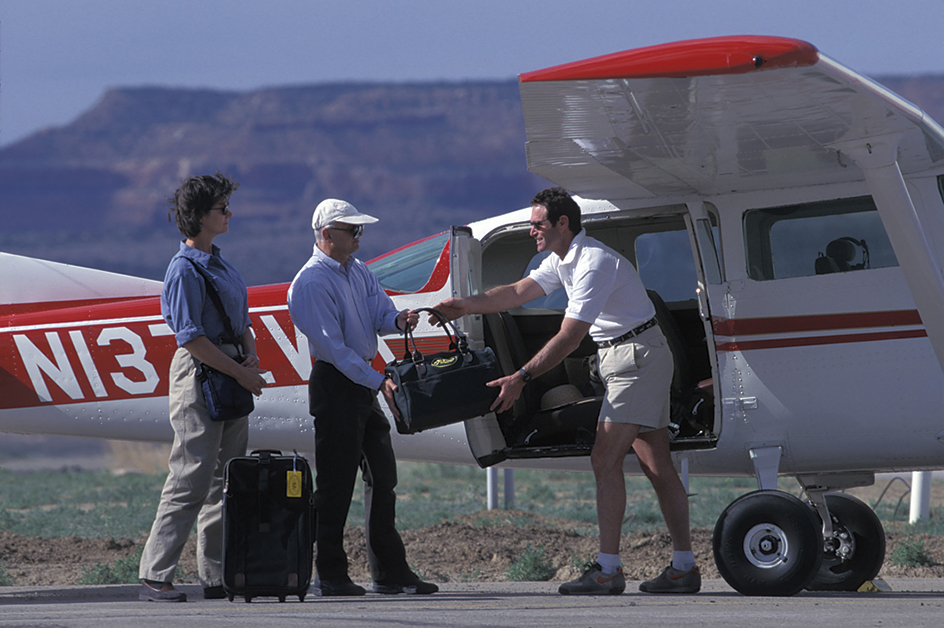
Many businesses have their own aircraft that are used to fly officials and salespeople to out-of-town assignments. General aviation planes also carry cargo and passengers in areas of the world that do not have highways or railroads.
In Australia, a specialized aviation service called the Royal Flying Doctor Service supplies medical treatment to people living in remote areas. People who are ill or require medical advice use radio to contact a doctor at the nearest base. The doctor may advise the patient by radio or may arrange for a light plane to pick up the patient. Air ambulances in other parts of the world provide specially equipped airplanes to fly patients to hospitals.
Airline operations.
Almost every country has at least one airline. In some countries, the government wholly or partly owns one or more airlines. For example, Singapore Airlines, the national airline of Singapore, is partly state-owned. During the 1990’s, many governments encouraged privatization of airlines to curb costs and increase efficiency.
There are two main types of airline service—scheduled flights and nonscheduled flights. Scheduled flights are made over certain routes according to a timetable. Nonscheduled flights are mainly charter flights for customers who want to hire a plane to fly to a particular place at a particular time.
In the United States, airlines must receive permission from the federal government to use commercial transport planes for scheduled flights. The airlines that the government approves for such flights are called certificated airlines. The term scheduled airlines is often used in the United States for the certificated airlines, though these lines may also make some nonscheduled flights. To receive government certification, an airline’s planes and pilots must meet government standards.
Most airlines carry both passengers and cargo. Airliners usually carry a certain amount of freight on passenger flights. Many passenger airlines also operate transport planes that carry only cargo. A few certificated airlines in the United States specialize in carrying cargo and do not make any passenger flights.
Sometimes, airlines have financial problems due to low passenger traffic, debts from purchasing new aircraft, and increasing costs, such as the rising cost of jet fuel. In the 1970’s, many airlines cut their airfares and developed various bargain ticket plans to attract passengers. These steps led to huge increases in passenger traffic. High operating costs led many small airlines to merge with larger airlines. By the late 1990’s, many airlines had also formed alliances for ticketing and for scheduling certain routes.
In most European countries, the government has combined two or more airlines to form a large national airline. Various European airlines have also formed consortiums to help cut expenses. The members of an airline consortium cooperate in such matters as purchasing aircraft and training pilots.
Airport operations.
Airports provide the fuel and the runways, navigation aids, and other ground facilities needed for air travel. Generally, only a few of a country’s airports have the facilities to handle large passenger planes. Additional small airfields serve light planes or specialized aircraft, such as helicopters or seaplanes. Cities or public corporations own most large airports. Most small airports are private airfields owned by organizations or individuals. See Airport.
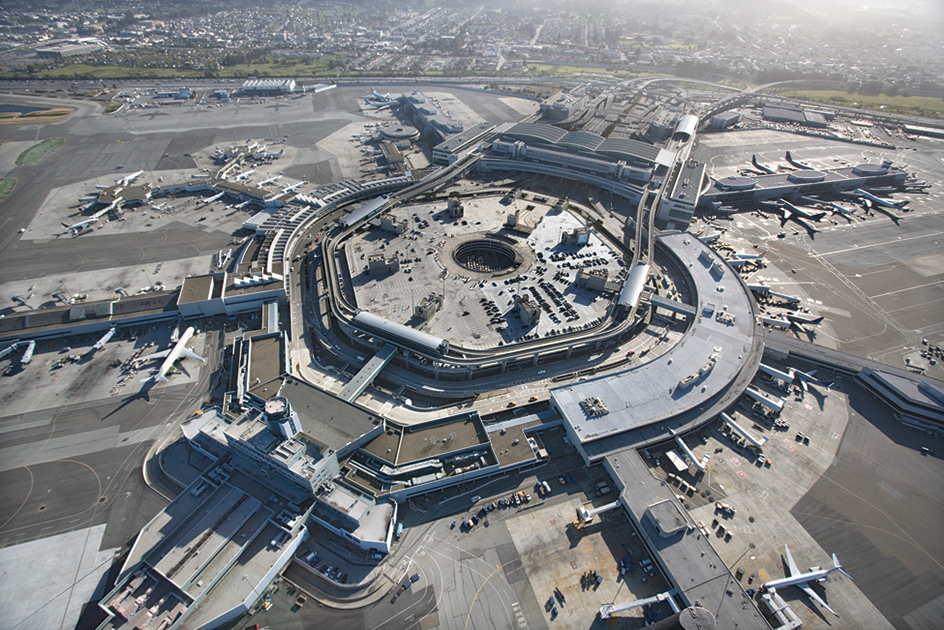
Aviation support industries
provide a wide variety of supplies and services to airlines, airports, pilots, and passengers. Some companies furnish repair services or fuel for airplanes. Freight forwarders make arrangements for shipping air cargo. Various food services prepare meals to be served on passenger flights. Some insurance brokers specialize in flight insurance, and some lawyers specialize in air law. Private weather bureaus supply pilots with specialized information not provided by government weather services.
Aviation agencies and organizations
Aviation agencies.
Most countries have government agencies that enforce air safety regulations and handle various economic matters relating to aviation. In the United States, the Federal Aviation Administration (FAA) establishes the rules that all planes must follow when flying in the United States. One of the agency’s most important jobs is to operate a network of air route traffic control centers throughout the United States and its territories. Each control center uses Automatic Dependent Surveillance-Broadcast (ADS-B) technology, which uses the Global Positioning System (GPS). GPS technology makes use of a network of navigation satellites to enable pilots anywhere on Earth to determine their location. A control center helps planes in its vicinity follow the airways, also called air routes, to which they are assigned (see Airplane (Air navigation)). The FAA also issues licenses to pilots. In addition, every newly manufactured airplane must be issued an FAA certificate of airworthiness before it may be flown. This certificate states that the airplane has been inspected and is in good flying condition. See Federal Aviation Administration.
Almost every U.S. state has an agency to regulate and improve aviation within its borders. These agencies handle airport construction, registration of airplanes and pilots, and similar matters. Many local governments also have aviation agencies. These agencies deal mainly with the operation and maintenance of local airports.
In Canada, the federal government regulates civil aviation. Transport Canada, a government department, deals mainly with such matters as registration of aircraft, licensing of pilots, and establishment of air navigation facilities. The Canadian Transportation Agency handles the economic regulation of Canadian airlines.
Similar regulatory activities are carried out by national agencies in other countries. Such agencies include the United Kingdom’s Civil Aviation Authority (CAA). These agencies are involved in such issues as air-traffic control and registration of airplanes and pilots.
The International Civil Aviation Organization
is an agency of the United Nations (UN). Almost every country belongs to the ICAO. The organization sets up common air safety standards among member countries and tries to increase cooperation in other matters concerning international aviation. See International Civil Aviation Organization.
Other aviation organizations
include various groups that were formed to further their own special interests. These groups include airline operators, airplane manufacturers, and pilots. For example, U.S. and Canadian airline operators belong to the Air Transport Association of America. Operators of international airlines in countries throughout the world belong to the International Air Transport Association. See Air Transport Association of America; International Air Transport Association.
History of the aviation industry
Beginnings.
The successful piloted flights of a powered airplane by Orville and Wilbur Wright in 1903 marked the beginning of the practical aviation industry. After these flights, the Wright brothers tried to sell the design for their plane to the U.S. and various European governments. However, many people at the time remained skeptical that flying machines could even work.
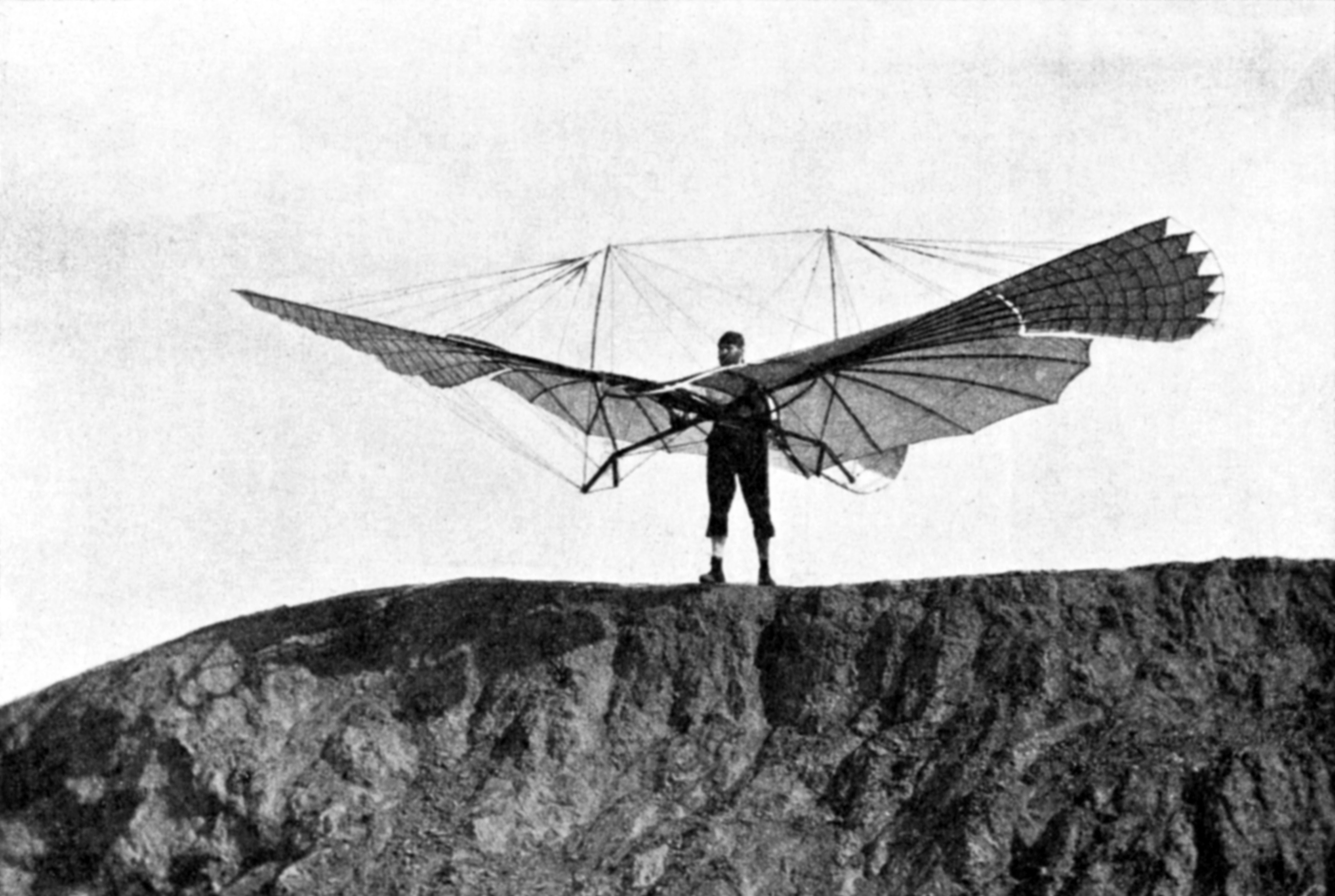
Meanwhile, a few European inventors had also built airplanes. In the 1890’s, the German glider pioneer Otto Lilienthal had manufactured a limited production series of special gliders for experimental use. In 1905, two French fliers, the brothers Charles and Gabriel Voisin, started the world’s first airplane-manufacturing company. They began making a few made-to-order planes at a small factory outside Paris. Within a few years, other European fliers also started manufacturing companies. They included Louis Blériot and the brothers Henri and Maurice Farman in France; and Frederick Handley Page, A. V. Roe, and T. O. M. Sopwith in the United Kingdom.
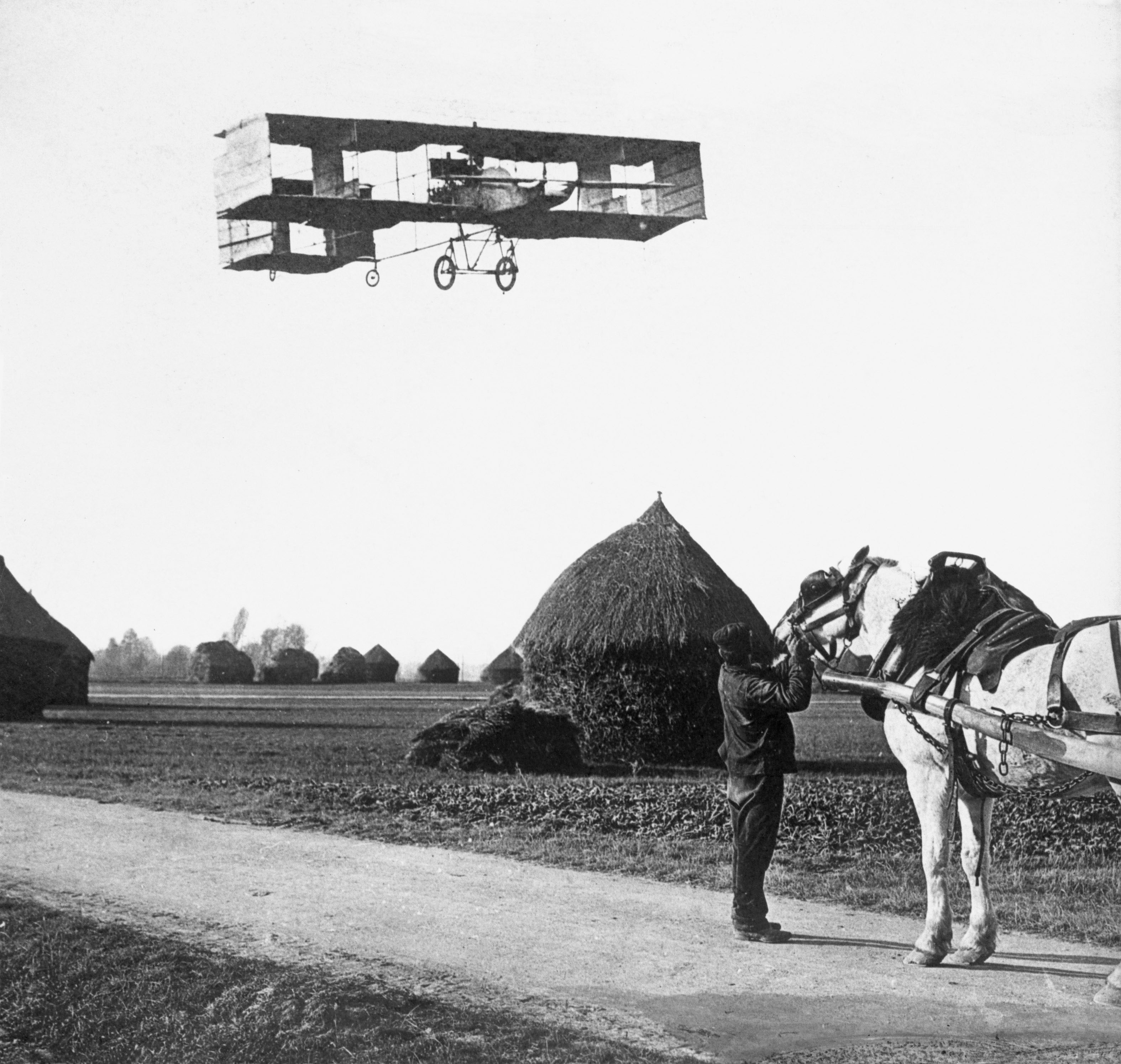
In 1907, Glenn H. Curtiss, an American flier and airplane designer, started the first airplane company in the United States, in Hammondsport, New York. Curtiss sold his first plane to the newly organized Aeronautic Society of New York for $5,000. This was the first sale of a commercial airplane in the United States.
Loading the player...Amelia Earhart
By 1908, the Wright brothers had made several public flights and dazzled audiences with their airplane’s flying ability. That same year, the U.S. Army Signal Corps ordered a specially built Wright plane, for which the government paid $30,000. This was the world’s first military plane. In November 1909, wealthy German backers helped the Wright brothers form the German-Wright Company. Later that year, the Wrights established the Wright Company in New York City, with a factory in Dayton, Ohio. In the autumn of 1909, a young automobile mechanic and salesman named Glenn L. Martin began to manufacture airplanes in an abandoned church in Santa Ana, California. Within a few years, his company became a leading U.S. producer of military planes.

The world’s first great aviation meeting was held in 1909 near Reims, France. Manufacturers displayed 38 airplanes. Several of the planes on show were offered for sale to the public—a sign of growing confidence in the airplane.
The first flying regulations.
In 1905, a group of French flying enthusiasts established the Fédération Aéronautique Internationale (FAI) in Paris. One of the FAI’s main duties was to regulate the sport of flying. It also ruled on world speed, altitude, and other flying records. The FAI still has this function. The Aero Club of America was also founded in 1905. It regulated flying in the United States, sponsored exhibitions and races, and issued licenses to U.S. pilots.
In 1908, Kissimmee, Florida, passed the world’s first law regulating airplanes. The law required the registration of local aircraft and regulated their speed and altitude when flying over the town. In 1911, Connecticut passed the first state law regulating aviation. The law required anyone who owned or operated an airplane within the state to register the plane and obtain a pilot’s license.
World War I (1914-1918).
When World War I began in Europe, even the largest airplane factories turned out only a few planes a year. But the factories quickly increased their production to meet the demands of the warring nations. Airplane builders used newly designed engines to put fighters and bombers into the skies. Such well-known manufacturers as Farman, Handley Page, and Voisin built many of these planes. Other European manufacturers also became famous for their warplanes. They included Morane-Saulnier and Nieuport in France; Fokker and Junkers in Germany; and Bristol, de Havilland, Hawker, Short, and Vickers in the United Kingdom. By the end of the war, designers had created such aircraft as the British Vickers Vimy bomber and the American Curtiss NC-4, both of which flew across the Atlantic Ocean in 1919.

The United States entered the war in 1917 with about 110 military planes. The government immediately set a production goal of 29,000 airplanes a year. But the airplane companies had little or no experience with mass-production methods. The nation’s automobile manufacturers, on the other hand, had developed assembly lines before the war and used them to turn out thousands of cars yearly. Various automakers helped set up assembly lines in the airplane factories.
The United States had no designs of its own for bombers or fighters. But American engineers designed a powerful airplane engine called the Liberty. Several U.S. companies began to mass-produce the United Kingdom’s de Havilland D.H. 4 bombers and equip them with Liberty engines. The principal producer was the Dayton Wright Aeroplane Company, which was organized in 1917. Wilbur Wright had died of typhoid fever in 1912, and Orville sold his interest in the Wright Company to a group of investors in 1915. Although Orville had no financial interest in the Dayton Wright Company, he allowed the firm to use the Wright name in its title. The companies founded by Curtiss and Martin also became major producers of military planes during the war. Although U.S. factories did not meet their production goal of 29,000 planes a year, they had built almost 15,000 military planes by the end of the war.
In 1916, two airplane companies were established on the West Coast of the United States. They were the Boeing Company, founded in Seattle by William E. Boeing, and the Lockheed Corporation (now Lockheed Martin Corporation), founded in Santa Barbara, California, by the brothers Allan and Malcolm Loughead. The Boeing and Lockheed companies were too small to make many planes during the war. But in time, they became two of the nation’s leading aircraft manufacturers.
The first airlines.
The Wright brothers and other early fliers occasionally took passengers for short plane rides. In 1910, a Wright airplane flew 70 pounds (32 kilograms) of silk from Dayton to Columbus, Ohio—perhaps the first air freight shipment in history. The world’s first regular airplane passenger service began in the United States in 1914, but it lasted only a few months. A pilot named Tony Jannus used a small seaplane to fly passengers across Tampa Bay, between St. Petersburg and Tampa, Florida. On May 15, 1918, the U.S. government started the world’s first permanent airmail service. Army pilots flew the mail between New York City, Philadelphia, and Washington, D.C.
After World War I, thousands of military planes became available for civilian use. In 1919, bombers were used to start nearly 20 small passenger airlines in France, Germany, the United Kingdom, and several other European countries. One of these airlines, founded by Henri and Maurice Farman, began the world’s first regular international airline service. The company used old Farman bombers to make weekly passenger flights between Paris and Brussels, Belgium.
By 1924, passenger airlines were operating in 17 European countries as well as in Africa, Australia, and South America. Several of these airlines are still active. They include KLM Royal Dutch Airlines (now part of Air France-KLM) of the Netherlands, Germany’s Lufthansa, and Australia’s Queensland and Northern Territory Aerial Services (QANTAS). Beginning in the mid-1920’s, the governments of many countries started to combine two or more private airlines to form a large national airline. In 1924, the United Kingdom became the first major power to form a national, government-owned airline, Imperial Airways.
Aviation progress.
Many small passenger airlines were formed during the early 1920’s. But most lasted only a few months because they could not attract enough customers. Most people considered flying a dangerous sport rather than a safe means of transportation.
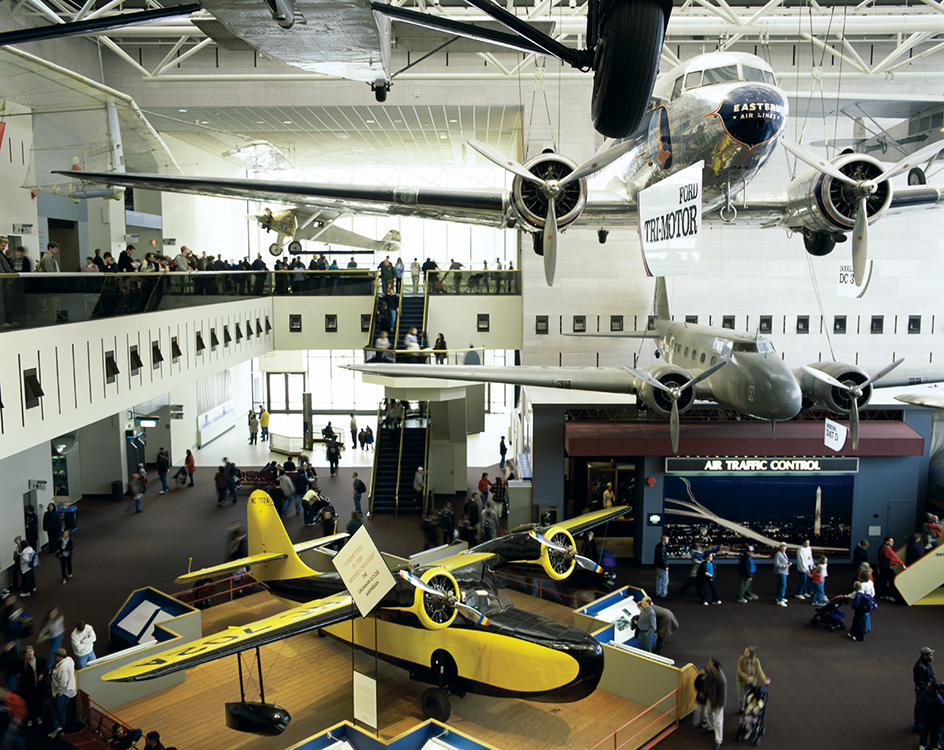
In the United States, the federal government’s main interest in aviation was to improve airmail service. In 1920, airmail routes extended from New York City to San Francisco. Mail planes operated only during the day, however. To help the mail pilots fly their open-cockpit planes at night, the government installed beacon lights at airports along the transcontinental route. Each light could be seen as far as 50 miles (80 kilometers) away. By 1924, night-flying techniques enabled planes to get mail from New York City to San Francisco in 24 hours.
In 1925, the U.S. Congress passed the Kelly Air Mail Act, which gave private airlines the job of flying the mail. The government then signed contracts with 11 companies formed to carry the mail. Henry Ford, the famous automobile maker, owned one of these airlines. In 1926, Ford’s airline became the first airline to carry U.S. mail. Within a few months, all 11 companies were flying mail between major U.S. cities. Some of the airlines also began carrying passengers. In 1926, airlines in the United States carried only about 6,000 passengers. In 1930, they carried more than 400,000.
Several U.S. aircraft companies were also started during the 1920’s. In 1920, an engineer named Donald Douglas helped organize an aircraft company in Santa Monica, California. It became the Douglas Company the following year, later part of McDonnell Douglas Corporation, and later still part of the Boeing Company. In 1923, the Consolidated Aircraft Corporation was founded in East Greenwich, Rhode Island. It took over the airplane designs of the Dayton Wright Company. The Pratt and Whitney Company began making aircraft engines in Hartford, Connecticut, in 1925. In 1929, the Curtiss and Wright companies merged to form the Curtiss-Wright Corporation. Grumman Aircraft (now part of Northrop Grumman Corporation) also started business in 1929 on Long Island, New York.
The rapid increase in aviation activity led Congress to pass the Air Commerce Act in 1926. This act was the first federal law to regulate aviation in the United States. It provided for a system of airways and navigation aids across the country. The act also called for rules governing the manufacture of airplanes and the licensing of airplanes and pilots. A Bureau of Air Commerce was set up to carry out these measures.
The industry comes of age.
Air transport continued to grow during the early 1930’s. By 1935, the United States had four major domestic airlines—American, Eastern, Transcontinental and Western Air (later called Trans World Airlines), and United. Smaller regional airlines included Braniff, Delta, and Northwest. The country also had a major international airline—Pan American World Airways (Pan Am)—which flew to Latin America. Many European governments continued to form large national airlines, such as Air France (now part of Air France-KLM).

To meet the growing demand for faster, larger airliners, manufacturers began to produce twin-engine planes, such as the Boeing 247 and the Douglas DC-3. The DC-3 appeared in 1935 and soon became the world’s most popular transport plane. A number of companies, including Martin (now Lockheed Martin Corporation) in the United States and Short in the United Kingdom, started to make large, four-engine seaplanes called flying boats. In the 1930’s, flying boats made the first passenger flights across oceans. New firms were also started in the 1930’s, such as North American Aviation and United Aircraft (now United Technologies), which took over production of Pratt and Whitney engines.
By the late 1930’s, flying was an important means of travel in most of the world. In 1938, the world’s airlines carried nearly 31/2 million passengers.
The rapid growth of civil aviation created a need for more effective government regulation. In 1938, the U.S. Congress established the Civil Aeronautics Authority to deal with every aspect of civil aviation. The authority included a five-member board, which, in 1940, became the Civil Aeronautics Board. It also included an administrative office, which became the Civil Aeronautics Administration (CAA) in 1940.
World War II (1939-1945).
The peace treaty that ended World War I prohibited the manufacture of military aircraft in Germany. Nevertheless, several German aircraft firms were founded during the 1920’s. They included the famous Heinkel and Messerschmitt companies. In the mid-1930’s, Heinkel, Messerschmitt, and other German firms, such as Dornier and Junkers, secretly made hundreds of bombers and fighters for the German air force. On Sept. 1, 1939, German dive bombers attacked Poland, and World War II began. One European country after another fell to the Germans. Finally, the United Kingdom was left nearly alone to fight off the German air force. British aircraft companies, such as Avro, de Havilland, Handley Page, Hawker, and Supermarine, quickly increased their production of warplanes.
The United States produced about 2,100 military planes in 1939. Both Germany and Japan had larger air forces. The huge Mitsubishi corporation produced many of Japan’s warplanes, including the famous Zero fighter. After the United States entered the war in December 1941, U.S. airplane production increased greatly. More than 40 companies took part in a gigantic effort to supply the United States and its allies with military planes. Many companies enlarged their factories and hired additional workers. Assembly lines began working round the clock. By 1944, production had reached nearly 100,000 transport planes, bombers, and fighters a year.
By the end of the war, U.S. factories had built more than 300,000 aircraft. Germany, Japan, the Soviet Union, and the United Kingdom had also produced many thousands of planes. During the war, aircraft production had become the world’s leading manufacturing industry.
A new age of flight.
In 1937, British inventor Frank Whittle built the first successful jet engine. The first jet airplanes were developed for military use. Germany flew the first jet aircraft in 1939. By 1942, both the United Kingdom and the United States had developed experimental jet planes for military use.
After World War II, aircraft manufacturers began the development of jet airliners. In 1952, British Overseas Airways Corporation (BOAC), now British Airways, started jet passenger flights with de Havilland Comets. But the flights were stopped after several Comets exploded in the air. Investigators discovered serious flaws in the plane’s structure. De Havilland engineers then designed an improved Comet. In 1958, BOAC used the new Comets to begin jet passenger service across the Atlantic Ocean. American companies also built successful jet transports in the late 1950’s, and these aircraft quickly dominated international air transportation. In 1959, American Airlines used the first of these—the Boeing 707—to start transcontinental jet service from New York City to Los Angeles.
The beginning of jet airline service created new challenges. Large jetliners carried nearly 200 passengers, and the crash of one of these planes could cause heavy loss of life. In addition, new hazards were created along the world’s air routes as airplanes flew faster and in greater numbers than ever before. In 1958, the U.S. government combined the CAA and several other agencies to form the Federal Aviation Agency. The agency was given the job of establishing and enforcing air safety regulations and air traffic procedures in the United States. It was renamed the Federal Aviation Administration in 1967.
By 1970, jet transports had replaced propeller-driven planes on most major airlines. In 1970, Pan Am became the first airline to offer jumbo jet service, using Boeing 747’s. France and the United Kingdom began passenger service with their SST, the Concorde, in 1976.
Industry mergers.
Beginning in the 1950’s, several large aerospace companies were formed by mergers. In 1954, the General Dynamics Corporation took control of Consolidated Vultee (Convair). In 1967, McDonnell Aircraft merged with Douglas Aircraft to form the McDonnell Douglas Corporation, and North American Aviation and Rockwell-Standard merged, forming the North American Rockwell Corporation. In 1973, this firm merged with Rockwell Manufacturing Company to become Rockwell International Corporation.
Internationalization
became an important trend in the aviation industry beginning in the 1960’s. The term refers to cooperative manufacturing programs in which firms from different nations share research, development, and production costs. The consortium formed by the British and French to build the Concorde SST was an early program of this type. Another successful program has been Airbus. This consortium, which manufactures commercial transport aircraft, has involved most countries in Western Europe.
United States aviation firms moved slowly into internationalization in the 1970’s. Manufacturers in Canada, Italy, Japan, and the United Kingdom produced major parts of the McDonnell Douglas DC-10 transport, which began commercial service in 1971. Some U.S. firms have formed partnerships with foreign companies to manufacture European-designed aircraft in the United States. For example, during the 1980’s, McDonnell Douglas produced the British-designed Harrier—a V/STOL (Vertical/Short Take-Off and Landing plane)—in partnership with British Aerospace (see V/STOL).
Airline safety concerns.
Beginning in the 1960’s, airliner hijacking, also called air piracy, became a serious problem. In 1970, hijackers throughout the world seized 49 airliners and forced the pilots to fly to destinations off their routes, often to other countries. In the 1980’s, terrorist sabotage became a serious risk as several airliners were blown up in flight.
In response to the hijackings, aviation authorities tightened airport security regulations. These regulations include the inspection of aircraft, passengers, and baggage for hidden guns, bombs, or other weapons. Most countries have laws against hijacking and terrorism. But laws differ from country to country. The ICAO develops procedures to help member countries establish consistent methods to prevent and investigate hijackings. See Airport (Airport security); Hijacking; Terrorism.

Deregulation and mergers.
In the late 1970’s, the Civil Aeronautics Board began to ease its controls over airline fares and routes in the United States to encourage greater competition and better service. In 1978, Congress passed the Airline Deregulation Act. This law provided for the gradual removal of economic controls of the airline industry. The Civil Aeronautics Board was dissolved in 1984. New airlines soon began to form, and existing ones rapidly expanded their services.
Deregulation in the United States allowed domestic airlines to compete in many international markets. Many U.S. airlines formed alliances with overseas carriers to simplify ticketing. Many U.S. airlines also developed hub and spoke systems. In such a system, many flights connect at a central airport. In manufacturing, several mergers in the 1990’s led to the disappearance of historic U.S. airplane builders, such as McDonnell Douglas, which merged into Boeing. International partnerships became increasingly significant, with Airbus capturing one-third of the world market in jet airliner sales in the 1990’s.
Recent developments.
On Sept. 11, 2001, terrorists hijacked four commercial airplanes, deliberately crashing two into the towers of the World Trade Center in New York City and one into the Pentagon Building outside Washington, D.C. The fourth hijacked plane crashed in Somerset County, Pennsylvania. After the hijackings, U.S. airports and airlines sought new ways to protect against terrorist attacks. Congress passed legislation requiring federal employees to handle all passenger and baggage inspection in U.S. airports by the end of 2002. A newly created agency, the Transportation Security Administration, took over air safety functions from the FAA.
Fears of terrorism and a sluggish world economy contributed to a decline in air travel in the early 2000’s. In 2003, British Airways and Air France discontinued all Concorde flights because the flights were no longer profitable. In 2008, Delta Air Lines, Inc., merged with Northwest Airlines to form one of the world’s largest commercial airlines. The merger of United Airlines with Continental Airlines in 2010 created another huge carrier. In 2011, British Airways merged with Iberia, but both airlines continued to operate under their own names.
Unmanned aerial vehicles, called drones, became increasingly important during the 2000’s for military operations. Such planes have no pilot and are controlled remotely to gather intelligence or attack enemies.
In 2010, a volcanic eruption in Iceland caused most of Europe’s major airports to close for several days. Aviation authorities grounded planes to avoid ash and particles in the air that could damage engines and endanger flights.
Careers in aviation
The aviation industry employs many kinds of skilled workers. They include aeronautical engineers, computer specialists, electricians, flight attendants, flight engineers, flying instructors, mechanics, pilots, radar specialists, and radio operators. In the United States, many jobs in the aviation industry require certification from the FAA. For example, air traffic controllers, aviation mechanics, flight engineers, and pilots must have FAA certificates.

Some schools offer courses in preparation for such careers as aviation mechanic, computer specialist, and radio operator. Aeronautical engineering and some other highly skilled professions require a college education. Most pilots obtain their training at flying schools or in military service. Some high schools and colleges also offer courses in flying. See Airplane (Learning to fly).
Jobs in general aviation.
Many pilots work for air taxi services, business firms, and other organizations that use light planes. In many countries, flying light planes for commercial purposes requires a commercial pilot license. In the United States, the FAA issues these licenses to pilots 18 years old or over who have at least 250 hours of flying experience and who pass the physical, written, and flight examinations.
Jobs with airlines and airports.
In most countries, airline pilots and copilots must obtain a special license. They must pass a thorough physical examination, as well as written and flight examinations. In the United States, airline pilots and copilots must have an FAA airline transport pilot license. To obtain this license, they must be at least 23 years old, and have a commercial pilot license and 1,500 hours of flight time.
Some airlines use flight engineers. On long flights, the engineers watch the many instruments in the cockpit that tell how the engines are operating. Most airlines require their flight engineers to have a commercial pilot license. Airlines prefer to hire flight attendants who have some college, business, or nursing training. Skilled mechanics are needed for airliner maintenance.
Jobs in the aircraft industry.
Aircraft manufacturers hire electricians, machine tool operators, mechanics, and other skilled workers to make and assemble the many parts of airplanes. The industry also employs various types of engineers to design aircraft and experienced pilots to test-fly planes.
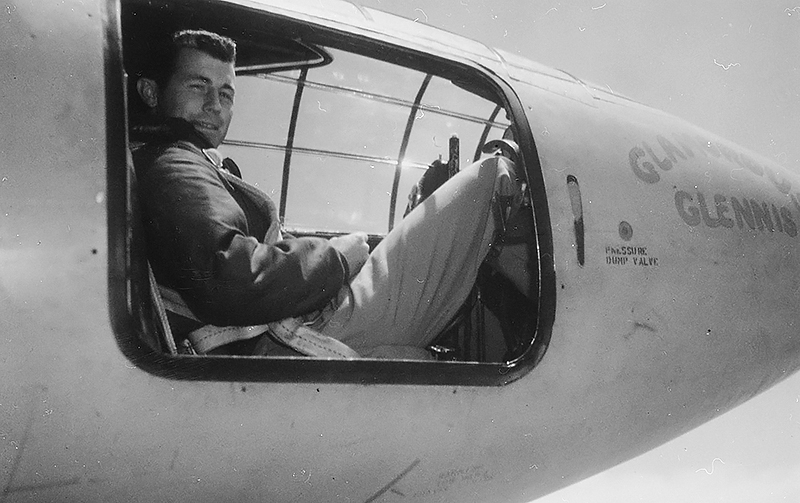
Jobs with government agencies.
Government agencies in many countries hire radar and radio operators to work at air route traffic control centers and airport control towers. They also hire mechanics and pilots to serve as safety agents. Many local aviation agencies also require engineers, mechanics, pilots, and other skilled people. Some large cities hire pilots to serve as flying police officers or to perform rescue services.
